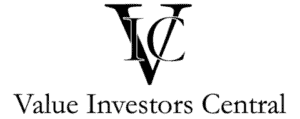Most investors keenly watch companies earning reports every time they are released, and for good reason. Stock prices generally follow earnings, so if a company’s earnings increase, the stock will likely go up. The Price to Earnings Growth ratio offers one tool for investors to compare the value of companies against each other.
A good Price to Earnings Growth (PEG) ratio for value investing is any ratio above the PEG of the S&P 500. For example, if the S&P 500 has a PEG of 1 and a company has a PEG of 1.2, the company has a higher growth rate. A company with a PEG lower than the S&P 500 has a lower growth rate.
What is Price to Earnings Growth Ratio?
The Price to Earnings Growth (PEG) ratio is calculated by dividing the Price to Earnings ratio (PE ratio) by its earnings growth rate over a specific period, usually annually. It is used to determine a stock’s value while incorporating its growth in earnings and projecting them into the future. It is generally considered to give a more accurate valuation of a company than the standard PE ratio valuation. For example, a company with a low PE ratio may look cheap, but it is not a favorable opportunity if its earnings are not increasing and will not likely increase in the future.
PEG can also be used to estimate a stock’s price in the future. For example, a company’s current earnings are $2 per share, and earnings have increased at a compound annual growth rate of 10% over the last ten years. If earnings per share (EPS) continue to grow at 10% over the next ten years, they will be $5.19 [$2*((1 + 0.1)^10)]. This estimated EPS can then be multiplied by the historical average PE ratio of 15 to get an estimated stock price of $77.85 ($5.19*15).
What Does the PEG Ratio Mean for Value Investors?
Value investors use the PEG ratio as a tool to identify stocks that are undervalued or overvalued relative to their growth potential. A PEG ratio of 1 is considered to be fair value, while a PEG ratio of less than 1 is considered to be undervalued and a PEG ratio of greater than 1 is considered to be overvalued. The logic behind this is that a company with a lower PEG ratio is trading at a discount to its earnings growth rate and may have more room for future growth.
What is a Good PEG Ratio for Value Investing?
While a PEG ratio of 1 is considered to be fair value, what constitutes a “good” PEG ratio for value investing can vary depending on the investor’s individual strategy and risk tolerance. As a general rule, a PEG ratio of less than 1 is considered to be a good buy signal for value investors. This suggests that the stock is undervalued relative to its earnings growth rate and has the potential to grow in the future.
However, it’s important to note that the PEG ratio should not be the only metric used to evaluate a stock’s potential. Investors should also consider other factors, such as a company’s financial health, industry trends, and competitive landscape. A low PEG ratio does not guarantee that a stock will be a good investment, and other factors may outweigh the benefits of a low PEG ratio.
How to Use the PEG Ratio in Your Investment Strategy
The PEG ratio can be a useful tool for value investors, but it should not be the only factor considered when evaluating a stock. Here are some tips for using the PEG ratio in your investment strategy:
- Look for undervalued stocks: As mentioned earlier, a PEG ratio of less than 1 is considered to be undervalued. Look for stocks with low PEG ratios that are trading below their fair value and have the potential to grow in the future.
- Consider the industry and competition: The PEG ratio is just one factor to consider when evaluating a stock. Investors should also consider the industry in which the company operates, as well as its competitors and market share.
- Evaluate the company’s financial health: A company’s financial health is an important factor to consider when evaluating a stock. Look for companies with strong financials, including a healthy balance sheet, consistent revenue growth, and strong earnings.
- Be patient: Value investing is a long-term strategy, and it’s important to be patient when evaluating a stock’s potential. Don’t expect immediate returns and
- be prepared to hold onto a stock for a few years to allow its growth potential to materialize.
- Use the PEG ratio in conjunction with other metrics: The PEG ratio should be used in combination with other valuation metrics, such as the price-to-earnings (P/E) ratio, price-to-book (P/B) ratio, and price-to-sales (P/S) ratio. By using a variety of metrics, investors can get a more comprehensive view of a company’s valuation.
Conclusion
In conclusion, the PEG ratio can be a valuable tool for value investors looking to identify undervalued stocks with strong growth potential. A PEG ratio of less than 1 is generally considered to be a good buy signal, indicating that a company is undervalued relative to its earnings growth rate. However, investors should not rely solely on the PEG ratio and should consider other factors, such as a company’s financial health, industry trends, and competitive landscape. By using a variety of valuation metrics and evaluating a stock’s potential from multiple angles, investors can make more informed investment decisions and build a well-diversified portfolio.


